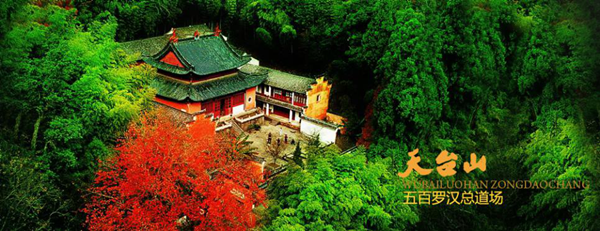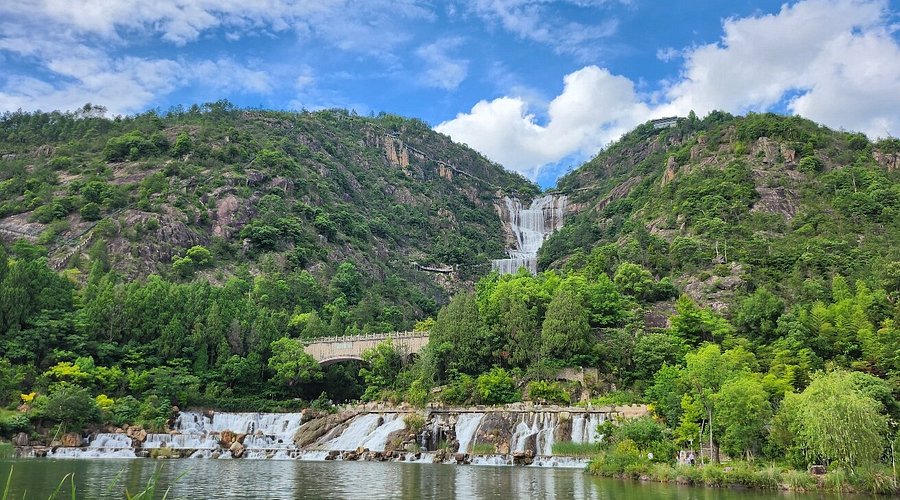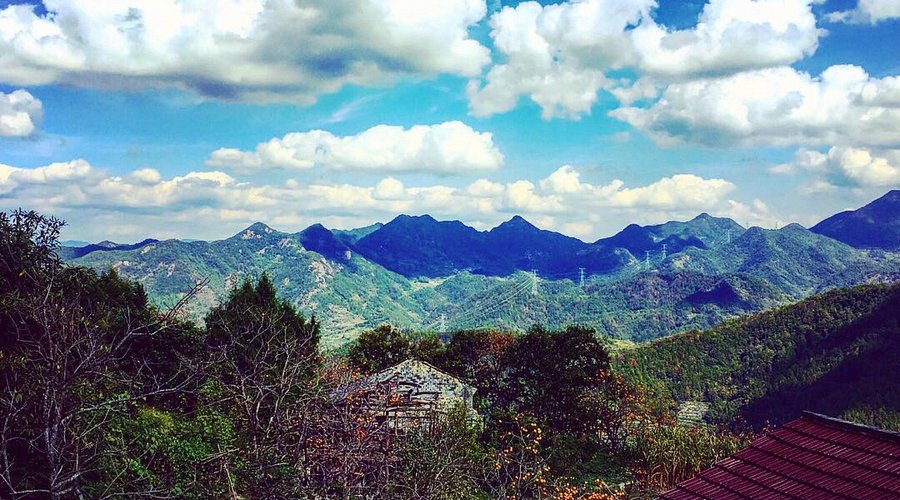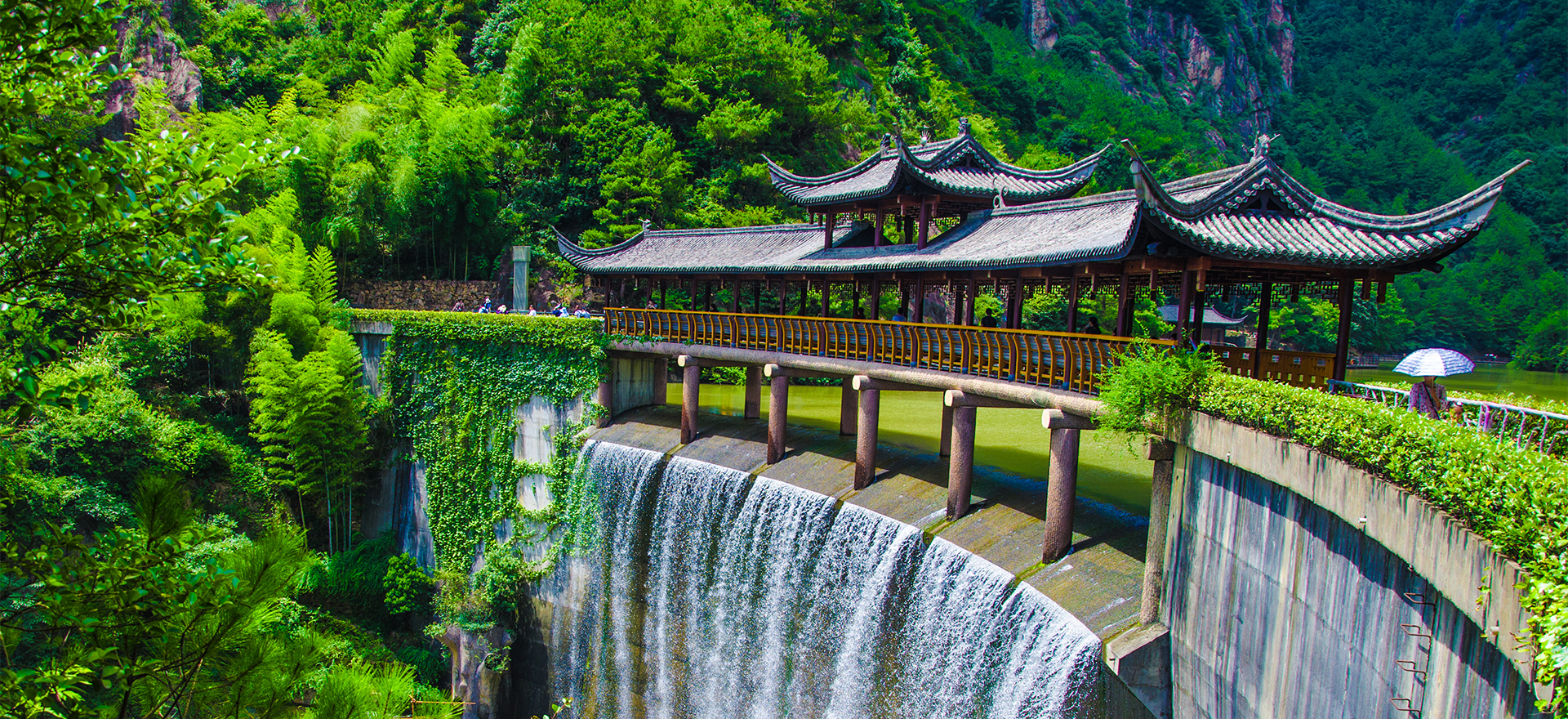Discover the Serene Beauty of Tiantai An: A Hidden Gem in China

An Essential Guide to Visiting Tiantai An
In This Guide
- An Essential Guide to Visiting Tiantai An
- The Rich History and Legends of Tiantai An
- Main Highlights: What You Absolutely Can’t Miss
- Planning Your Visit: A Practical Guide
- Tickets: Prices, Booking, and Tips
- How to Get There: A Complete Transportation Guide
- Local Cuisine and Accommodation Nearby
- Frequently Asked Questions
- Final Thoughts on Your Trip
Nestled in the serene embrace of the Shanxi province, Tiantai An (天台庵) stands as a testament to China’s rich tapestry of history and spirituality. This ancient temple, revered for its tranquil atmosphere and architectural beauty, is more than just a destination—it is a portal into the profound world of Buddhist heritage and Chinese culture.
As you approach Tiantai An, the journey itself becomes an integral part of your experience. Surrounded by lush mountains and scenic landscapes, the temple offers visitors a chance to escape the hustle and bustle of urban life and immerse themselves in the serenity of nature. The site is not only a sanctuary for spiritual seekers but also a captivating destination for those curious about the historical and cultural narratives that have shaped this region.

Tiantai An.
Why Visit Tiantai An?
-
Spiritual Significance: Tiantai An is intricately linked to the Tiantai sect of Mahayana Buddhism, one of China’s major Buddhist traditions. Pilgrims from all corners of the country flock here to pay homage, making it a living symbol of faith and devotion.
-
Architectural Beauty: The temple complex showcases exquisite traditional Chinese architecture, with intricate wooden carvings, majestic pavilions, and serene courtyards. Each structure tells a story, reflecting the artistry and spirituality of its time.
-
Natural Splendor: The surrounding area is a feast for the senses. With rolling hills, vibrant flora, and tranquil waters, it’s a perfect spot for hiking and photography. The changing seasons further enhance the breathtaking scenery, making every visit unique.
Planning Your Visit
-
Tickets and Access: Before you embark on your journey, check the latest information on ticket prices and opening hours to ensure a smooth visit. While many sections may be free, some areas might require an entrance fee.
-
Best Time to Visit: The ideal time to explore Tiantai An is during the spring and autumn months when the weather is mild, and the natural surroundings are at their most vibrant.
-
Cultural Etiquette: As you wander through the temple grounds, remember to respect the local customs and traditions. Modest attire is recommended, and maintaining a quiet demeanor helps preserve the sanctity of this spiritual haven.
Nearby Attractions
While Tiantai An is a gem on its own, don’t miss the chance to explore the nearby attractions that enrich your understanding of the region’s culture and history. From the ancient Guoqing Temple to the scenic wonders of the Tiantai Mountains, each site offers a glimpse into the diverse tapestry of Chinese heritage.

Tiantai An.
Visiting Tiantai An is not merely a trip; it is an invitation to connect with a lineage of spiritual seekers and a chance to reflect on the profound beauty of Chinese culture. Prepare to be captivated by its history, inspired by its serenity, and enchanted by the stories that echo through time.
The Rich History and Legends of Tiantai An
Unveiling the Rich Tapestry of Tiantai An
Nestled in the serene mountains of Shanxi Province, Tiantai An (天台庵) is much more than a picturesque spot for travelers; it is a cultural and spiritual landmark steeped in history and legend. This ancient temple, often linked to the broader narrative of Chinese Buddhism, offers a glimpse into the profound philosophies and traditions that have shaped the region for centuries.

Tiantai An.
A Historical Overview
Origins and Significance
Tiantai An traces its roots back to the early days of Buddhism in China. Founded during the Tang Dynasty (618-907 AD), it has long been associated with the Tiantai School of Buddhism, one of the country’s most important sects. This school emphasizes the teachings of the Lotus Sutra and promotes the idea that all beings possess the potential for enlightenment. The temple itself served as a significant center for Buddhist scholarship and practice, drawing monks and pilgrims from across the nation and beyond.
Architectural Marvel
The architecture of Tiantai An is a testament to traditional Chinese temple design, featuring ornate eaves, intricate carvings, and peaceful courtyards. Each structure within the temple complex tells its own story, from the majestic hall of the Buddha to the tranquil meditation rooms that offer solace to weary souls. The juxtaposition of the temple against the backdrop of the Tiantai Mountains enhances its serene atmosphere, inviting visitors to reflect on both nature and spirituality.
Legends of Tiantai An
The Legend of the Celestial Beings
One of the most captivating legends associated with Tiantai An involves celestial beings who are said to bless the temple and its visitors. According to local folklore, these divine spirits descend from the heavens during the full moon, bringing with them wisdom and tranquility. Many pilgrims believe that spending a night in the temple during such a lunar event can lead to profound insights and spiritual awakening.

Tiantai An.
The Tale of the Enlightened Monk
Another poignant story revolves around a renowned monk who dedicated his life to meditation at Tiantai An. It is said that after years of rigorous practice, he attained a state of enlightenment atop a nearby mountain peak. In recognition of his achievement, the temple was adorned with a statue in his honor, and it is believed that those who pray at this statue with sincerity will receive guidance on their life’s path.
The Guardian of the Temple
The temple is also home to a guardian spirit, often depicted as a fierce warrior. Legend has it that this guardian protects the temple from malevolent forces and ensures that the teachings of Buddhism remain pure. Many visitors leave offerings at the guardian’s altar, seeking protection and blessings for their journeys ahead.
Cultural Impact and Modern Relevance
A Pilgrimage Destination
Today, Tiantai An continues to attract pilgrims and tourists alike, many of whom come to experience its spiritual ambiance and connect with its rich history. The temple hosts various religious festivals throughout the year, drawing thousands of devotees who participate in rituals and ceremonies that celebrate Buddhist teachings.

Tiantai An.
Preservation of Tradition
Efforts to preserve the cultural heritage of Tiantai An are evident in the temple’s ongoing restoration projects and community engagement initiatives. Local monks and volunteers work tirelessly to maintain the temple’s structures and promote traditional practices, ensuring that the teachings of the Tiantai School continue to flourish.
Visiting Tiantai An
For international travelers seeking to immerse themselves in Chinese history and culture, Tiantai An offers a unique experience. Whether you are drawn by its stunning architecture, the legends of enlightenment, or the serene surroundings of the Tiantai Mountains, a visit to this historic temple is sure to leave a lasting impression. Embrace the tranquility, engage with local traditions, and perhaps, discover a piece of enlightenment on your journey through this remarkable site.
Main Highlights: What You Absolutely Can’t Miss
Discover the Unmissable Highlights of Tiantai An (天台庵)
Nestled in the scenic landscapes of Pingshun, Shanxi, Tiantai An is not just a temple; it embodies centuries of rich history and vibrant culture. For international travelers seeking a deep dive into Chinese traditions and spiritual practices, this site is a must-visit. Here’s a detailed guide to the highlights that you absolutely can’t miss during your visit to Tiantai An.

Tiantai An.
1. The Spiritual Heart: Tiantai An Temple
At the core of your visit should be the Tiantai An Temple itself. Known for its tranquil atmosphere and stunning architecture, this temple is a significant site for Tiantai Buddhism, one of the major schools of Chinese Buddhism. As you wander through its serene halls adorned with intricate carvings and statues, take a moment to reflect on the teachings that have inspired countless practitioners over the centuries.
Tip: Don’t forget to visit the nearby camphor trees, which are said to be centuries old, providing a natural backdrop that enhances the spiritual ambiance.
2. Guoqing Temple: The Birthplace of Tiantai Buddhism
A short distance from Tiantai An, the Guoqing Temple is another landmark you simply cannot overlook. Established in the late 16th century, this temple is revered as the birthplace of Tiantai Buddhism. Explore the expansive grounds, which include multiple halls and the iconic stone pagoda that punctuates the skyline.

Tiantai An.
Visitor Insights: Admission to Guoqing Temple is free, making it an accessible experience for all travelers. The temple is particularly vibrant during festivals, attracting thousands of pilgrims and visitors alike.
3. Qiongtai Xiangu Scenic Area: Nature’s Masterpiece
For those who appreciate the beauty of the natural world, the Qiongtai Xiangu Scenic Area is a breathtaking retreat. This natural park features stunning waterfalls, serene reservoirs, and scenic mountain trails perfect for hiking.
Hiking Recommendations: Access the park from either the top or the bottom, depending on your comfort level. The trail offers spectacular views, and while the hike can be challenging, the sights along the way make it worthwhile.

Tiantai An.
4. Tiantai Hot Spring Resort: Relaxation and Rejuvenation
After a day of exploration, unwind at the Tiantai Hot Spring Resort, located conveniently near the Guoqing Temple. This modern facility offers numerous hot spring pools, some of which are open-air, allowing you to relax while soaking in the natural beauty surrounding you.
Insider Tip: Booking a stay at the resort can enhance your experience, offering a perfect blend of relaxation and cultural immersion.

Tiantai An.
5. Huading Peak National Park: A Trek to Remember
For the adventurous traveler, Huading Peak National Park presents an opportunity for stunning vistas and a chance to experience the sacred nature of the Tiantai mountains. Although some may find the entry fee a bit steep for the experience, the tranquility and less crowded paths make it a unique spot for those seeking solitude and natural beauty.
Accessibility: The park is best accessed by local transport, and the ride itself offers picturesque views of traditional villages and lush landscapes.
6. Cultural Exploration: Jigong’s Former Residence
Dive deeper into local culture by visiting the former residence of Jigong, a historical figure revered in Chinese folklore. While the area may feel somewhat reconstructed, it offers valuable insights into the lives of those who have shaped the region’s history.

Tiantai An.
Entry Fee: The site has a modest entrance fee, making it an affordable addition to your itinerary.
7. Scenic Drives: The Tianpei Line
For those who enjoy a leisurely drive, the Tianpei Line, which leads north from the Guoqing Temple, is a visual feast. This picturesque route passes through traditional villages and offers sweeping views of the surrounding mountains, making it an ideal drive for photography enthusiasts.

Tiantai An.
Recommendation: Renting a vehicle or hiring a taxi can provide you with the flexibility to explore at your own pace.
Final Thoughts
Tiantai An is a treasure trove of historical significance and natural beauty, inviting travelers to immerse themselves in the spiritual and cultural heritage of China. Whether you’re hiking through nature, exploring ancient temples, or relaxing in hot springs, each experience at Tiantai An promises to be memorable. Prepare to be enchanted by the rich tapestry of history, culture, and spirituality that defines this remarkable destination.
Planning Your Visit: A Practical Guide
Planning Your Visit: A Practical Guide to Tiantai An (天台庵)
Nestled in the picturesque mountains of Shanxi Province, Tiantai An is a serene retreat that offers visitors a unique glimpse into China’s rich Buddhist heritage. This guide will equip you with essential information to enhance your visit, covering everything from ticket prices to nearby attractions.

Tiantai An.
Getting There
By Bus:
– From Hangzhou: Direct buses run from Hangzhou Passenger Transport Central Station to Tiantai Passenger Transport Central Station. The journey takes about an hour, costing approximately CNY 79.
– From Shanghai: Long-distance buses are available from either Shanghai South Long Distance Bus Station or Hutai Road Long Distance Bus Station, with a travel time of around three hours and a fare of about CNY 140.
Local Transportation:
Once in Tiantai, the Tourist Service Center is your go-to hub for transportation to scenic areas. Shuttle buses are available to popular sites, including Tiantai An itself, making it convenient to explore the region.
Opening Hours and Admission
While specific opening hours may vary, it is advisable to contact Tiantai An directly for the most accurate information prior to your visit.
Ticket Prices:
– Entry to Tiantai An is generally free, but some nearby attractions may charge an admission fee (usually around CNY 60-65). Check for any special events or exhibitions that might have different pricing.
Nearby Attractions
In addition to Tiantai An, there are several attractions worth exploring in the vicinity:
-
Guoqing Temple (国清寺): This historic temple is the birthplace of the Tiantai sect of Mahayana Buddhism and is a must-visit for its serene surroundings and architectural beauty. Entry is free.
-
Qiongtai Xiangu Scenic Area (琼台仙谷): A natural park featuring stunning landscapes, waterfalls, and hiking trails. Entry fee is approximately CNY 65, and it’s a popular spot for both tourists and locals.
-
Huading Peak National Park (华顶国家公园): Although some report it may not be worth the entry fee, it offers beautiful hiking paths and a tranquil atmosphere. Expect to pay around CNY 50 for entrance.
-
Shiliang Waterfall Scenic Area (十里梁瀑布): A breathtaking waterfall located within Huading National Park. Entry fee is about CNY 60.
-
Former Residence of Jigong (济公故居): A cultural site that provides insight into local history, though opinions vary on its authenticity. Admission is approximately CNY 30.
Accommodations
Accommodations in Tiantai range from budget-friendly hotels to luxury resorts. Some recommended options include:
-
Fengya Lanzhuang Hotel: A budget option located a few kilometers from Qiongtai Scenic Area. The hotel is basic but comfortable, and the staff is friendly.
-
Tiantai Hot Spring Resort: For a more luxurious stay, consider this resort featuring various hot spring pools and beautiful mountain views. Prices start at around CNY 680.
Booking Tip: It’s advisable to book your stay in advance through reliable platforms like Ctrip, which offers support for international travelers.
Local Cuisine
While exploring Tiantai, don’t miss the chance to indulge in local cuisine. Small eateries and rural restaurants are plentiful, offering authentic dishes that reflect the region’s culinary traditions. Look out for local specialties and enjoy a meal while soaking in the serene atmosphere.
Final Tips
-
Language: While many staff members at tourist centers speak some English, learning a few basic Mandarin phrases can greatly enhance your experience.
-
Weather: The best time to visit Tiantai An is during the spring (April to June) and autumn (September to November) when the weather is mild, making it ideal for hiking and outdoor activities.
-
Respect Local Customs: As Tiantai is a religious site, remember to dress modestly and conduct yourself with respect while visiting temples and other sacred places.
With its rich history and stunning natural beauty, Tiantai An is a destination that promises an enriching experience for any traveler interested in Chinese culture and spirituality. Enjoy your trip!
Tickets: Prices, Booking, and Tips
When planning your visit to Tiantai An (天台庵), understanding the ticketing process and associated costs is essential for a smooth and enjoyable experience. Here’s everything you need to know about ticket prices, booking options, and some handy tips for international travelers.
Ticket Prices
-
Tiantai An Admission Fee: Entry to Tiantai An is free of charge, allowing visitors to explore this historic site and its surroundings without any cost barrier.
-
Nearby Attractions: While Tiantai An itself does not have an entry fee, many nearby attractions do require tickets. Here are some key examples:
- Qiongtai Xiangu Scenic Area: Entrance fee is 65 RMB.
- Huading Peak National Park: Entrance fee is 50 RMB plus 40 RMB for shuttle bus service (or a combo ticket for 80 RMB).
- Shiliang Waterfall Scenic Area: Entrance fee is 60 RMB.
- Former Residence of Jigong: Entrance fee is 30 RMB.
Booking Information
-
Online Booking: For attractions that require tickets, it’s advisable to book in advance through reliable platforms such as Trip.com or Ctrip. This ensures you have your tickets ready and can secure any discounts or promotions.
-
On-Site Purchase: Tickets for most attractions can also be purchased at the Tiantai Tourist Service Center, which serves as the transportation hub for the area. Staff members usually speak basic English, making it easier for international travelers to navigate.
Tips for Travelers
-
Plan Ahead: Since some attractions do charge fees, prepare your itinerary in advance and check for any potential discounts for early bookings or group visits.
-
Timing Your Visit: Tiantai An and the surrounding areas can attract large crowds, especially during weekends and holidays. Visiting on weekdays can enhance your experience by allowing you to enjoy the serene atmosphere.
-
Transportation: Use the local bus services available from the Tiantai Tourist Service Center to reach various attractions. This not only saves you money but also provides a local experience.
-
Cash is King: While credit cards are accepted in larger establishments, many local vendors and ticket counters may only accept cash (RMB). It’s wise to carry enough cash for your expenses.
-
Cultural Etiquette: As Tiantai An is a place of historical and religious significance, be respectful of the local customs and practices. Dress modestly and maintain a quiet demeanor, particularly in sacred spaces.
-
Explore Beyond the Temple: Don’t miss the opportunity to visit nearby attractions like the Guoqing Temple, which is the birthplace of Tiantai Buddhism and offers a profound insight into this important spiritual tradition.
By keeping this ticketing guide in mind, you can enhance your visit to Tiantai An and the surrounding wonders, ensuring an enriching experience steeped in Chinese history and culture. Enjoy your journey!
How to Get There: A Complete Transportation Guide
Getting to Tiantai An: Your Comprehensive Transportation Guide
Visiting Tiantai An (天台庵) offers a unique opportunity to delve into the rich tapestry of Chinese history and culture. Nestled in the stunning landscapes of Shanxi Province, this ancient temple is a must-see for anyone interested in Buddhism, architecture, and the serene beauty of the Chinese countryside. Here’s how to navigate your journey to this enchanting destination.
Getting to Tiantai An by Bus
From Changzhi:
– Departure Point: Changzhi Passenger Transport Central Station
– Duration: Approximately 1.5 hours
– Fare: Around CNY 35-50
– Frequency: Several buses operate daily, so you can choose a time that suits your itinerary.
From Pingshun:
– Departure Point: Pingshun Passenger Transport Central Station
– Duration: Approximately 30 minutes
– Fare: About CNY 10-15
– Tips: Pingshun serves as a convenient hub for reaching nearby attractions, including Tiantai An.
Traveling from Major Cities
From Hangzhou:
– Bus Route: Hangzhou Passenger Transport Central Station to Tiantai Passenger Transport Central Station
– Duration: About 1 hour
– Fare: Approximately CNY 79
– Notes: This route is popular among travelers looking to explore the natural beauty and cultural heritage of Tiantai.
From Shanghai:
– Bus Route: Long-distance bus from either Shanghai South Long Distance Bus Station or Hutai Road Long Distance Bus Station to Tiantai Passenger Transport Central Station
– Duration: Approximately 3 hours
– Fare: Around CNY 140
– Recommendation: Buses depart frequently, but it’s advisable to check schedules in advance, especially during weekends and holidays.
Local Transportation to Tiantai An
Once you arrive at Tiantai Passenger Transport Central Station, getting to Tiantai An is straightforward:
- Public Buses: Local buses run regularly from the station to various scenic spots, including Tiantai An. Look for signs or ask at the station for the specific bus number.
- Taxi Services: Taxis are available and can be a comfortable option if you’re traveling with a group or have luggage. Ensure the driver understands your destination, or have the name written in Chinese.
Exploring the Surrounding Areas
Tiantai An is just one of many attractions in the area. If you wish to explore further:
-
Tiantai Tourist Service Center: This center is the transportation hub for all main attractions. From here, you can purchase tickets and catch shuttle buses to sites like Guoqing Temple and Qiongtai Xiangu Scenic Area. The staff here typically speak some English, aiding your navigation.
-
Car Rentals: For the more adventurous traveler, consider renting a car to explore the scenic roads and hidden gems around Tiantai. Note that driving in China requires an International Driving Permit (IDP) and familiarity with local traffic regulations.
Tips for a Smooth Journey
- Plan Ahead: Check bus schedules in advance, especially during peak travel seasons.
- Language: While some locals may speak English, having a translation app can be helpful for communication.
- Cash is King: While larger cities may accept credit cards, it’s wise to carry cash (CNY) for small purchases and local transport.
Conclusion
Reaching Tiantai An is not only about the destination; it’s part of the journey through some of China’s most breathtaking landscapes and rich cultural heritage. With this transportation guide, you can navigate your way with confidence and immerse yourself in the serene beauty and profound history that Tiantai An has to offer. Happy travels!
Local Cuisine and Accommodation Nearby
Savoring Local Flavors and Finding Comfort in Tiantai
Nestled in the picturesque landscapes of Shanxi, Tiantai An (天台庵) offers not only a glimpse into its rich history and spiritual significance but also a delightful culinary experience and comfortable accommodations. As you explore this serene environment, indulge in the local flavors and choose from a variety of nearby lodging options to enhance your visit.
Culinary Delights
Tiantai is known for its diverse and flavorful cuisine that reflects the rich agricultural heritage of the region. Here are some must-try dishes and local eateries:
-
Tiantai Noodles (天台面): These hand-pulled noodles are a local specialty, served in a fragrant broth with a variety of toppings such as vegetables, meat, and aromatic herbs. Look for small family-owned restaurants that prepare this dish with love and tradition.
-
Stir-Fried Seasonal Vegetables: Given the area’s agricultural focus, the fresh seasonal vegetables are a highlight. Dishes often feature ingredients like bok choy, mushrooms, and local herbs, simply stir-fried to retain their natural flavors.
-
Buddhist Vegetarian Cuisine: With Tiantai An’s Buddhist heritage, many restaurants offer vegetarian dishes that are both healthy and delicious. Savor dishes made from tofu, seaweed, and grains, often infused with traditional spices that elevate simple ingredients.
-
Local Snacks: Don’t miss street vendors selling snacks such as scallion pancakes and sweet bean paste buns. These quick bites are perfect for a midday refuel as you explore the area.
Recommended Dining Spots
-
Jinghua Restaurant (京华餐厅): A popular spot known for its authentic Tiantai noodles and warm atmosphere. The friendly staff can guide you through the menu if you’re unfamiliar with the local dishes.
-
Vegetarian Harmony (素和餐厅): This restaurant specializes in Buddhist vegetarian cuisine, offering a peaceful dining experience with a menu that changes seasonally. The dishes are beautifully presented and packed with flavor.
-
Local Snack Street (小吃街): Located near the Tiantai Tourist Service Center, this vibrant area is filled with stalls and small eateries, perfect for sampling a variety of local snacks and quick meals.
Comfortable Accommodations
When it comes to finding a place to stay, Tiantai offers a range of accommodations that cater to different preferences and budgets. Here are some noteworthy options:
-
Tiantai Hot Spring Resort (天台温泉度假村): For those looking for a touch of luxury, this resort features hot spring pools and comfortable rooms starting from around 680 RMB. It’s a perfect retreat after a day of exploration.
-
Fengya Lanzhuang Hotel (风雅兰庄酒店): A budget-friendly option located just a few kilometers from the Qiongtai Scenic Area. While it may not boast the highest cleanliness standards, the hotel offers a warm atmosphere and friendly English-speaking staff, making it a convenient choice.
-
Guoqing Temple Guesthouse (国庆寺客栈): For a unique experience, consider staying at the guesthouse near the famous Guoqing Temple. This accommodation allows you to immerse yourself in the tranquil surroundings, ideal for early morning visits to the temple.
Conclusion
As you journey through the historical and spiritual landscapes of Tiantai An, take the time to indulge in the local cuisine and select an accommodation that suits your needs. The harmonious blend of delicious food and comfortable lodging will undoubtedly enhance your experience in this enchanting part of China.
Frequently Asked Questions
Frequently Asked Questions about Tiantai An (天台庵)
1. What is Tiantai An and why is it significant?
Tiantai An, or Tiantai Temple, is a historic Buddhist site located in the Tiantai Mountains of Shanxi Province, China. It is renowned as the birthplace of the Tiantai school of Mahayana Buddhism, which has significantly influenced Buddhist practices in China, Japan, and Korea. The temple features stunning architecture and serene surroundings, making it a popular pilgrimage destination for followers.
2. What are the opening hours for Tiantai An?
While specific opening hours can vary, it is advisable to check directly with the temple or local tourism information closer to your visit. Typically, the site is open daily, but visiting early in the morning can offer a quieter experience.
3. Is there an entrance fee to visit Tiantai An?
Yes, there is an entrance fee to access Tiantai An. As of 2025, the fee is typically around 30 RMB. This fee helps maintain the temple and its surrounding areas. It’s recommended to carry cash, as some places may not accept international credit cards.
4. How can I get to Tiantai An from major cities in China?
Tiantai An is accessible by bus from several major cities. From Hangzhou, you can take a bus from the Hangzhou Passenger Transport Central Station, which takes about an hour. If you’re coming from Shanghai, long-distance buses depart from either Shanghai South Long Distance Bus Station or Hutai Road Long Distance Bus Station, with a trip duration of approximately three hours.
5. What are the nearby attractions to explore while visiting Tiantai An?
In addition to Tiantai An, visitors can explore several nearby attractions:
– Guoqing Temple: The main site for Tiantai Buddhism, known for its impressive halls and ancient camphor trees.
– Qiongtai Xiangu Scenic Area: A natural park featuring beautiful landscapes, waterfalls, and hiking trails.
– Huading Peak National Park: Offers scenic views and a chance to experience the spirituality of the Tiantai Mountains.
6. What should I wear when visiting Tiantai An?
As Tiantai An is a temple, visitors are advised to dress modestly. Comfortable walking shoes are recommended since you will likely be exploring the temple grounds and nearby scenic areas. Additionally, layers are suggested, as mountain weather can be unpredictable.
7. Are there any accommodations available near Tiantai An?
Yes, there are various accommodations ranging from budget hotels to more luxurious options, including hot spring resorts. It is advisable to book in advance through reliable platforms like Ctrip, especially during peak travel seasons.
8. Can I find English-speaking staff at Tiantai An?
While the primary language is Mandarin, some staff members at Tiantai An and surrounding tourist centers often have basic English skills. However, it is beneficial to learn a few key phrases in Mandarin to enhance your experience and facilitate communication.
Final Thoughts on Your Trip
As you prepare to conclude your journey through the serene landscapes and rich cultural heritage of Tiantai An, take a moment to reflect on the experiences that have shaped your visit. This hidden gem nestled in the mountains of Shanxi is not just a destination; it’s a profound journey into the heart of Chinese spirituality and history.
A Journey of Discovery
From the moment you stepped into Tiantai An, you entered a world where ancient traditions and breathtaking natural beauty intertwine. The tranquil ambiance of the temple, the whispering winds through the camphor trees, and the rhythmic chants of devoted pilgrims all create a symphony that resonates within the soul. Each corner of the temple complex tells a story, reminding us of the enduring legacy of Tiantai Buddhism, which has influenced countless individuals across Asia.
Embrace the Culture
Don’t forget to immerse yourself in the local culture. Engage with the friendly locals, sample the delicious Shanxi cuisine, and take time to explore the surrounding areas. The nearby Guoqing Temple and the scenic trails of Qiongtai Xiangu offer not only stunning vistas but also deeper insights into the spiritual significance that this region holds for many.
Practical Reflections
As you prepare to depart, here are a few tips to keep in mind for future travelers:
- Plan Ahead: Ensure to check the opening hours and any seasonal events that may enhance your visit.
- Respect Traditions: As a guest in this sacred place, remember to maintain a respectful demeanor, particularly during prayer times.
- Capture Memories: While photographs can capture the beauty of your surroundings, take time to simply breathe in the atmosphere and create lasting memories in your mind.
Final Thoughts
In summary, your trip to Tiantai An is more than just a visit to a site; it’s an invitation to explore the depths of Chinese history and spirituality. Embrace the serenity of the mountains, the wisdom of the ancients, and the warmth of the people. As you leave this sacred space, carry with you the stories and experiences that will inspire your future journeys. Safe travels, and may your adventures continue to unfold with wonder and discovery.